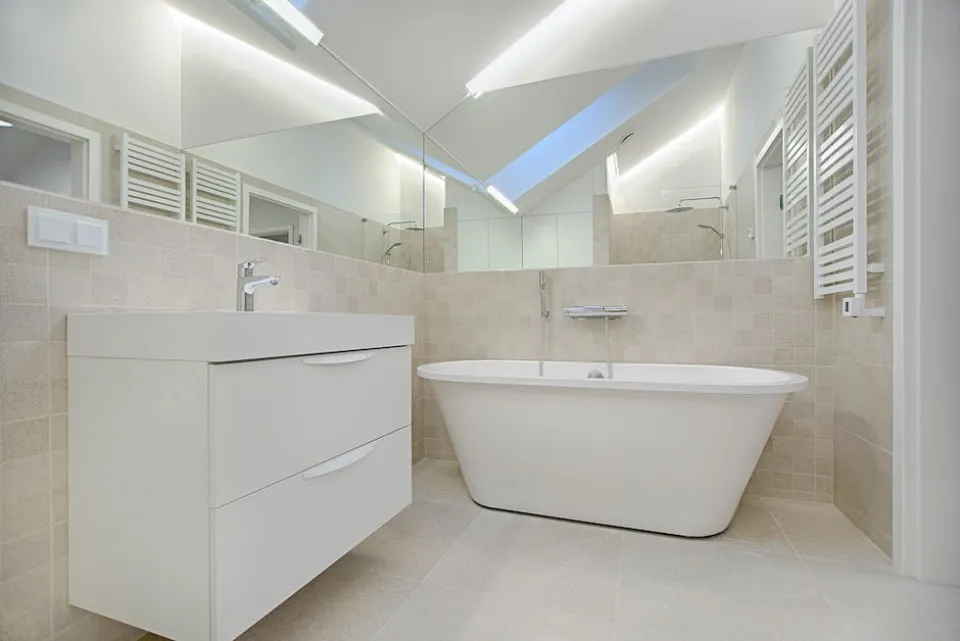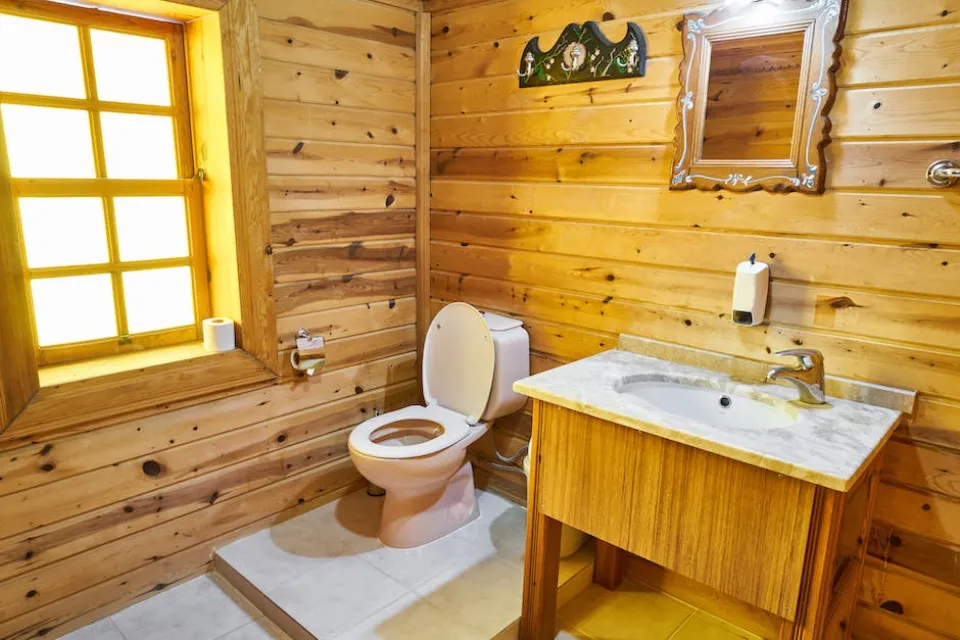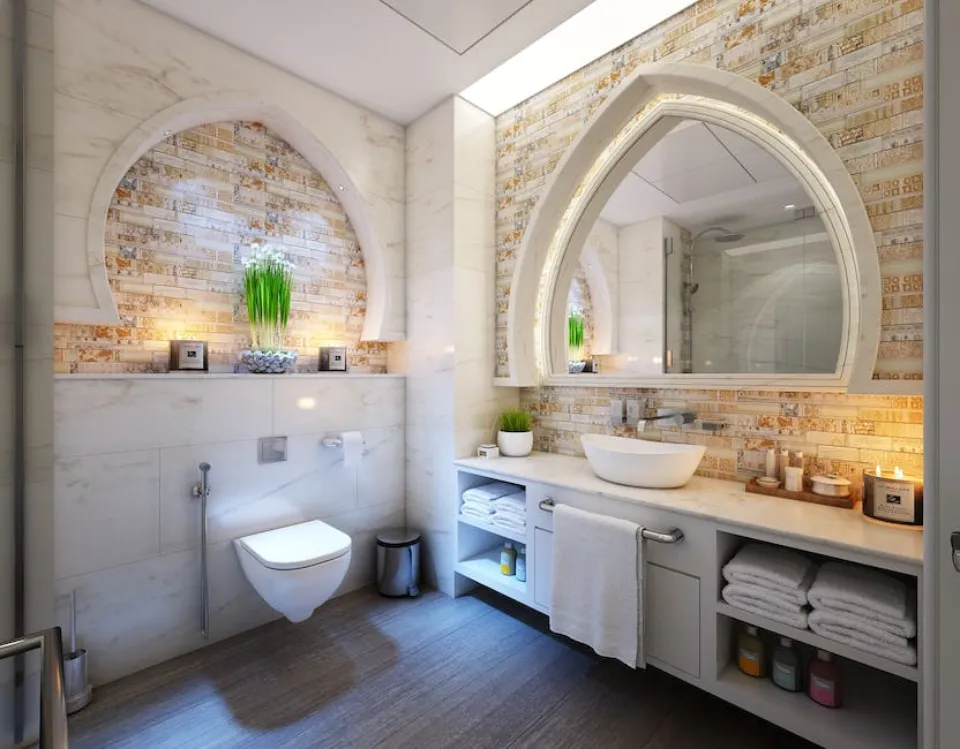If your living room has multiple windows or a window that’s a focal point of the room, choosing the right type of curtains can be overwhelming and you may be wondering, how to choose curtains for living rooms?
In general, you are supposed to Know the Difference Between Curtains and Drapes, Pick Out the Right Fabric, Choose the Right Curtain Colour, Choose Wisely Between Prints and Solids, Select the Ideal Length of Curtains for Windows and Doors…
How to Choose Curtains for Living Rooms?
Below are the steps on how to choose curtains for living rooms:
Know the Difference Between Curtains and Drapes
Establishing what your room needs is the first step in learning how to choose curtains for living rooms and other spaces. Oftentimes, homeowners choose curtains, drapes, blinds and shades without knowing the difference between them. By doing this, you run the risk of these window treatments obstructing the recommended amount of sunlight entering your room.
Therefore, it’s crucial to understand the distinctions between these two soft furnishings before learning how to select curtains and drapes. Curtains are lightweight fabric panels that are hung from rods. They’re ideal for living rooms because they’re typically used for privacy. For bedrooms, however, window treatments are ideal because they are made of thicker materials that help to block sunlight.
Pick Out the Right Fabric
If you are wondering how to choose curtains for your living room, the curtain fabric plays a vital role as it impacts the look of the room. From sheer lace to lightweight cotton, medium-weight brocades to heavy velvet, your options in curtain designs for windows are aplenty. The two factors that you should consider while answering the question how to pick curtains and choosing your fabric are:
- The amount of sunlight you want streaming in
- the atmosphere and room’s design. For example, heavier fabrics suit more traditional rooms while sheer fabrics work best in minimalist rooms
Each fabric will have a different appearance when pleated and drawn back because each material falls differently from a height. When choosing curtain styles for homes, it’s important to keep this in mind.

How to Choose Curtain Colour?
Having trouble deciding on the color of curtains for your house? In a perfect world, the color of your window and door curtain designs would match the other furniture in the room. Window coverings can either complement or contrast the decor, depending on your preference. Now how do you select the curtain colour? You can opt for a pleasing look by going for drapes in a colour that complements the shade of your walls. Instead, select a color that contrasts with the furnishings and walls if you want the curtain design to be the main attraction.
Choose Wisely Between Prints and Solids
You must select the pattern before making your curtain-picking decisions. We must consider the rest of the decor before deciding whether to use prints or solids. Choosing printed curtain designs for your home can be a wise decision if all of the other soft furnishings in the room are solid colors. Conversely, it’s also accurate. One thing to keep in mind when selecting curtains for living rooms and other spaces is that prints give any element more visual weight. As a result, pairing printed window treatments with solid-colored furniture and adding printed area rugs and cushions to it can help you make the most of their printed curtain designs. While florals would complement both modern classic and traditional decor, quirky prints and geometric patterns would work well in a contemporary setting.
Select the Ideal Length of Curtains for Windows and Doors
The length is important whether you’re looking for living room or bedroom curtains. In style right now are curtains that fall to the floor. You can choose a curtain size that is a few inches longer to make the drapes puddle on the floor for a more dramatic appearance. However, if you have children, it is preferable to have curtains that are a few inches above the ground. Another traditional option for window treatments is to have curtains that end at the sill; however, full-length drapes may also be an option.
Measure the Width of Your Curtain for Windows and Doors
Be aware that width matters when deciding which curtains to choose for your home. The width of the moulding on your window pane or door determines the ideal width of your curtains for windows and doors. Measuring the frame and multiplying it by 2/2.5 is one method of determining the ideal width. When the curtains are drawn back, the extra fabric aids in creating the gathered appearance on the sides.
Buy Matching Trims and Accessories for Your Curtains
Do you want to know how to choose and style curtains for your home? You can either dress them up or tone them down. Pull-backs, valances, and even decorative curtain tracks that are mounted on the wall above the curtains are just a few of the curtain trims and accessories available. Light drapes can be shrewdly used in conjunction with trims and accessories to add grandeur and richness. The window curtain’s valance, a decorative frilled fabric, is a wonderful way to decorate your room. On the other hand, simple pull-backs and absence of decorative trims will make fabrics like velvet or satin look chic and sleek. This again will depend on the effect you want to achieve.

Pick Between Lined and Unlined Curtains for Windows
Here, you evaluate the usefulness of the drapes or curtains you’ve chosen. A protective lining can make the curtain more opaque, fade less quickly, and last longer if it is hung on a window that is exposed to direct sunlight. Two layers—one sheer and one opaque—can also give you the freedom to select the level of light and privacy that you desire. The fact remains that linings make drapes heavier, so make an informed decision.
Select Fabrics Based on the Maintenance Required
The fabric and material of a curtain determines how it should be cleaned and how often you need to clean it. All curtains and drapes should be washed every three to six months, but some fabrics need more attention than others, while others can be machine washed.
- Low-maintenance fabrics:If you are looking for curtains that need to be washed twice a year, opt for cotton or synthetic fabrics. If they are not lined, you can machine-wash them; otherwise, give your lined curtains a quick hand wash. These are a great option for those with dust allergies or kids and pets at home
- High-maintenance fabrics:No matter the fabric, curtains with swags or pleats must be dry-cleaned. However, wool, silk and sheer curtains must be dry-cleaned or hand-washed in cold water to retain their colour and shape
You can also choose to vacuum your drapes and curtains on a weekly basis if you are prone to dust allergies.
How to Measure Curtains?
When it comes time to measure for the curtains, you’ll have a few decisions to make:
- Standard size curtains or made-to-order drapes? You will have countless options if you decide to buy custom living room drapes. These consist of the height at which you should mount your hardware, the width of the final drapes, and the overall length. Additionally, if you place a custom order, a drapery expert will assist you, unless you are making the drapes yourself. The fundamental lengths and widths must be used when working with standard sizes.
How Long Do the Drapes Need to Be?
Short drapes are rarely attractive. You’ll need to choose how you want the drapes to hang if you’re looking for floor-length window treatments for your living room. 63 inches, 84 inches, 95 inches, 108 inches, and 120 inches are the typical curtain panel lengths. Depending on the window’s height and how high you want to mount the curtain rod, there may be restrictions on how the curtains hang.
- Brushing the floor – These curtains will hang just above the floor by about half an inch.
- The floor will be broken by curtains hung in this way, but they won’t puddle. Typically, they are between one and three inches longer than the distance from the floor.
- Pooling on the floor: Drapes that are hung in this manner will generously puddle at the bottom because they are anywhere between 6 and 12 inches longer than the distance to the floor.
How Wide Do You Want the Drapes to Be?
The first consideration is whether you want the curtains to cover the entire window. You don’t need to calculate as precisely if you’re using curtains in conjunction with blinds or if they’re purely decorative. There will be additional calculations required if you do decide to cover the entire window.
- When measuring the width, add 12 inches to each side to make sure it covers the molding and is wide enough to account for the rod, which should extend 4 to 6 inches beyond each side of the window frame
- 48 inches is the typical width of a standard, off-the-shelf curtain panel. If the panel has gathers or pleats, it might be narrower.
- Double widths are available for some sheers.

How to Hang Curtains?
Once you’ve made all the measurements, the next step is to install the hardware. In order to make it look cohesive, hang this equally across each of the living room’s windows.
- Gather all the equipment and tools you’ll need to install the curtain rod and brackets before you begin.
- Tape measure
- Pencil
- Level
- Stud finder
- Screws
- Screwdriver
- Drill
- Drywall anchors
Installing the hardware
- Measure the area where the curtain rod brackets will go. First, measure two inches out to the side from each of the top corners of the window molding and make a pencil mark. (Or the corner of the window if there is no molding.) The bracket locations should then be measured 4 to 6 inches above these marks.
- To determine whether the marks correspond to a wall stud’s location, use a stud finder. If so, simply drill a hole in the wall, then screw the bracket in. If not, you will need to drill pilot holes and use wall anchors. This is required to guarantee that the bracket can support the combined weight of the drapes and hardware.
- If the window is wide, there may be a third bracket that will need to be mounted in the center over the window.
- Make sure the brackets are even by using a level.
- Placing the curtain panels on the rod The kind of will determine how you go about doing this. Your curtain panels, including whether they have grommet holes, pockets, or clips that attach to rings.
- Put the rod into the brackets and secure it. Add the finials on the ends, if you have them.
Should Curtains Touch the Floor?
This is a common question and as we already noted, floor-length curtains look best. Shorter curtains are actually very out-of-date and just not attractive. You would be better off using blinds or a shade if having long curtains wasn’t an option for some reason.
The fact that the drapes in the living room look taller and more opulent when they reach the floor is part of the explanation for this. There are three ways to have curtains touch the floor, as was previously mentioned.
- Once more, floating curtains are drapes that have been hemmed so that they hang about half an inch above the ground. This gives you the elegant look but makes it easy to keep the floor cleaned and is. No issues with kids or animals. Of course, getting the length just right with ready-made curtain panels will require either very precise placement of the hardware or some hemming.
- Curtains that split at the floor are hung in a very modern manner and are the perfect choice for living room drapes. The curtains are about 3 inches longer than those that float. With heavier fabrics, this works best.
- The best type of hanging curtains for drapes that are not opened and closed frequently are those that puddle. This is because they are anywhere from 6 to 12 inches longer than plain floor length. There’s no doubt that this is a opulent, formal look. Most importantly, it may not be the best for households with small children and pets who might play in the drapes or try to climb them. Both voluminous sheers and heavy, elegant living room drapes can be used with this look.

How Wide Should Curtains Be?
First and foremost, decide if you want the curtains to completely cover the window before choosing the width of your curtain panels.
You don’t need to calculate as precisely if you’re using drapes along with blinds or if the curtains are purely decorative.
If you do want to cover the whole window, you’ll need to make some extra calculations when you’re measuring for curtains.
- Add 12 inches to each side when measuring to make sure the panels cover the molding and are wide enough to account for the rod, which will extend 4 to 6 inches beyond each side of the window frame
- 48 inches is the typical width of a standard, off-the-shelf curtain panel. The panel may be narrower if they are gathered or pleated. Some curtain panels, particularly sheers, can be found in double widths.
Read about
Living Room Curtain Considerations
The living room is probably the room in your house that gets the most traffic and use, so choosing the right curtains is crucial from a design and practicality standpoint. To begin, think about a few things: will the curtains be purely decorative? Do you have a lot of windows and want to keep the cost down, or is there one big window that serves as the room’s focal point and is worth splurging on more expensive curtains? Do you want light filtering panels to keep the room bright and airy or do you watch lots of movies in the living room and would prefer blackout curtains?
Answering these practical questions regarding the curtains’ function will narrow down your options. It doesn’t matter whether you choose heavy velvet or a linen that has a natural appearance if the curtains are only intended to be decorative because the fabric has no bearing on how much light they let in. But choosing the right fabric is crucial to getting the desired result when light and brightness are factors.
When you’re working with a living room that has multiple windows, creating a unified look is key, and using identical curtains and rods and hanging them at the same height ensures you achieve that.
In addition to controlling light, curtains are a great way to highlight windows with interesting architectural details, add a layer of texture, color, and pattern to a room that feels unfinished, and create a cozier and warmer atmosphere.



